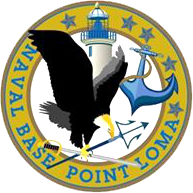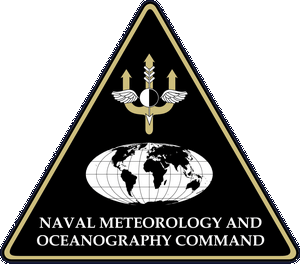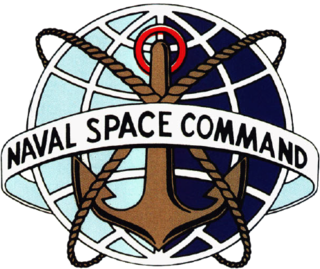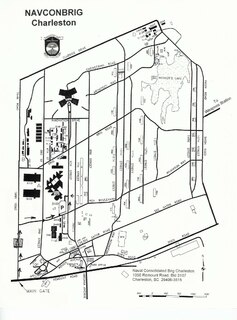United States special operations forces (SOF) are components of the Department of Defense's United States Special Operations Command (USSOCOM).

Military communications or military signals involve all aspects of communications, or conveyance of information, by armed forces. Military communications span from pre-history to the present. The earliest military communications were delivered by runners. Later, communications progressed to visual and audible signals, and then advanced into the electronic age. Examples from Jane's Military Communications include text, audio, facsimile, tactical ground-based communications, terrestrial microwave, tropospheric scatter, naval, satellite communications systems and equipment, surveillance and signal analysis, encryption and security and direction-finding and jamming.
The U.S. Navy Electronics Laboratory (NEL) was created in 1945, with consolidation of the naval radio station, radar operators training school, and radio security activity of the Navy Radio and Sound Lab (NRSL) and its wartime partner, the University of California Division of War Research. NEL’s charter was “to effectuate the solution of any problem in the field of electronics, in connection with the design, procurement, testing, installation and maintenance of electronic equipment for the U.S. Navy.” Its radio communications and sonar work was augmented with basic research in the propagation of electromagnetic energy in the atmosphere and of sound in the ocean.
Warfare systems are tactical systems and tactical mission-support systems, such as weapons, sensors, command and control, navigation, aviation support systems, mission planning, intelligence, surveillance and reconnaissance, interior and exterior communications, topside design, and warfare system networks. Warfare systems may be found on naval vessels, military aircraft and other military hardware.

Naval Information Warfare Center Pacific, formerly Space and Naval Warfare Systems Center Pacific provides the Navy with research, development, delivery and support of integrated command, control, communications, computers, intelligence, surveillance, and reconnaissance (C4ISR), cyber and space systems and capabilities across all warfighting domains. The only Naval technical center headquartered in a major fleet concentration area, NIWC Pacific manages strategic locations both in the Pacific theater and around the world. The diverse, multi-disciplinary workforce of more than 4,700 scientists, engineers and support personnel work hand-in-hand with more than 200 Fleet operators and active duty service members to ensure NIWC Pacific solutions are Fleet-and warfighter-ready.

Naval Surface Warfare Center Crane Division is the principal tenant command located at Naval Support Activity Crane. NSA Crane is a United States Navy installation located approximately 35 miles southwest of Bloomington, Indiana and predominantly located in Martin County, but small parts also extend into Greene and Lawrence counties. It was originally established in 1941 under the Bureau of Ordnance as the Naval Ammunition Depot for production, testing, and storage of ordnance under the first supplemental Defense Appropriation Act. The base is named after William M. Crane. The base is the third largest naval installation in the world by geographic area and employs approximately 3,300 people. The closest community is the small town of Crane, which lies adjacent to the northwest corner of the facility.
Command and control or C2 is a "set of organizational and technical attributes and processes ... [that] employs human, physical, and information resources to solve problems and accomplish missions" to achieve the goals of an organization or enterprise, according to a 2015 definition by military scientists Marius Vassiliou, David S. Alberts and Jonathan R. Agre, The term often refers to a military system.

Operations Specialist is a United States Navy and United States Coast Guard occupational rating. It is a sea duty-intensive rating in the Navy while the majority of Coast Guard OS's are at ashore Command Centers.

The Navy Expeditionary Combat Command (NECC) serves as the single functional command to centrally manage current and future readiness, resources, manning, training and equipping of the United States Navy's 21,000 expeditionary forces who are currently serving in every theater of operation. The NECC was established in January 2006. NECC is a subordinate command of the Navy's Fleet Forces Command.

Located in Point Loma, a neighborhood of San Diego, California, Naval Base Point Loma (NBPL) was established on 1 October 1998 when Navy facilities in the Point Loma area of San Diego were consolidated under Commander, Navy Region Southwest. Naval Base Point Loma consists of seven facilities: Submarine Base, Naval Mine and Anti-Submarine Warfare Command, Fleet Combat Training Center Pacific, Space and Naval Warfare Systems Command (SPAWAR), SPAWAR Systems Center, the Fleet Intelligence Command Pacific and Naval Consolidated Brig, Miramar. These close-knit commands form a diverse and highly technical hub of naval activity. The on-base population is around 22,000 Navy and civilian personnel.

Patrick Hahler Brady is a retired United States Navy rear admiral who in July 2007 became the first person of Hispanic descent to be named Commander of the Naval Undersea Warfare Center. At the time, he was one of four admirals of Hispanic descent who were serving in the United States Navy. He later served four years as head of the Space and Naval Warfare Systems Command.
The Space and Naval Warfare Systems Center Atlantic is a component of the United States Navy located in Charleston, South Carolina.
The Department Of the Navy (DON) Acquisition Intern Program is a civilian professional hiring program. The Naval Acquisition Career Center (NACC) manages several hundred interns at any given time.

The Operational Test and Evaluation Force (OPTEVFOR) serves as independent and objective agency within the United States Navy for the operational testing and evaluation (OT&E) of naval aviation, surface warfare, submarine warfare, C4I, cryptologic, and space systems in support Navy and U.S. Department of Defense acquisition programs.

The Naval Meteorology and Oceanography Command (COMNAVMETOCCOM) or CNMOC, serves as the operational arm of the Naval Oceanography Program. Headquartered at the Stennis Space Center in Mississippi, CNMOC is an echelon three command reporting to United States Fleet Forces Command (USFLTFORCOM). CNMOC's claimancy is globally distributed, with assets located on larger ships, shore facilities at fleet concentration areas, and larger production centers in the U.S.
The systems commands, abbreviated as SysCom or SYSCOM, are the materiel agencies of the United States Department of the Navy, responsible for the design, construction, and maintenance of military systems such as ships, aircraft, and weapons. The systems commands replaced the Navy bureau system in 1966 and report to the Assistant Secretary of the Navy for Research, Development and Acquisition. The current Navy systems commands are:

The Naval Sea Systems Command (NAVSEA) is the largest of the United States Navy's five "systems commands," or materiel organizations. NAVSEA consists of four shipyards, ten "warfare centers", four major shipbuilding locations and the NAVSEA headquarters, located at the Washington Navy Yard, in Washington D.C.

The Naval Space Command (NSC) was a military command of the United States Navy. It was headquartered at Dahlgren, Virginia, USA, and began operations 1 October 1983. Naval Space Command used the medium of space and its potential to provide essential information and capabilities to shore and afloat naval forces by a variety of means:

Naval Support Activity Charleston, originally designated Naval Weapons Station Charleston, is a base of the United States Navy located on the west bank of the Cooper River, in the cities of Goose Creek and Hanahan South Carolina. The base encompasses more than 17,000 acres (69 km²) of land with 10,000 acres (40 km²) of forest and wetlands, 16-plus miles of waterfront, four deep-water piers, 38.2 miles (61.5 km) of railroad and 292 miles (470 km) of road. The current workforce numbers more than 11,000 with an additional 3,600 people in on-base family housing.












